The privately developed Antares rocket built by Orbital Sciences Corp. successfully blasted off on its maiden test flight from the shores of Virginia on April 21 at 5 p.m. EDT from Mid-Atlantic Regional Spaceport (MARS) Pad-0A at NASA Wallops – thereby inaugurating the new commercial space race and delivered a pioneering trio of low cost NASA Smartphone nanosatellites dubbed PhoneSat to orbit.
The 13 story Antares rocket pierced the chilly but cloudless clear blue Virginia skies as “the biggest, loudest and brightest rocket ever to launch from NASA’s Wallops Flight Facility,” said former station astronaut and now Orbital Sciences manager Frank Culbertson.
Antares picture perfect liftoff marked the first step in a public/private collaboration between NASA and Orbital Sciences to restart cargo delivery services to the International Space Station (ISS) that were lost following the forced retirement of NASA’s space shuttle orbiters in 2011.
“Today’s successful test marks another significant milestone in NASA’s plan to rely on American companies to launch supplies and astronauts to the International Space Station, bringing this important work back to the United States where it belongs,” said NASA Administrator Charles Bolden.
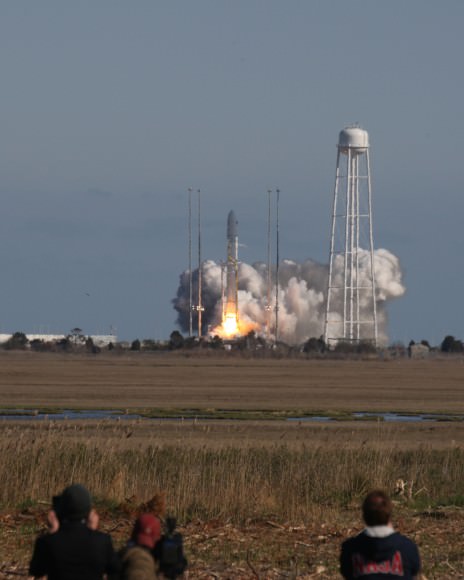
The test flight was dubbed the A-One Test Launch Mission and also signified the first launch from Americas newest space port at Pad-0A.
The primary goal of this test flight – dubbed the A-One mission – was to test the fully integrated Antares rocket and boost a simulated version of the Cygnus cargo carrier – known as a mass simulator – into a target orbit of 250 x 300 kilometers and inclined 51.6 degrees.
Antares also lofted the trio of off-the-shelf-smartphone “PhoneSats” to orbit. The three picture taking satellites are named Alexander, Graham and Bell and could be the lowest-cost satellites ever flown in space.
“The Phonesats cost about $3500 each,” said Andrew Petro, NASA Small Satellite Program executive, to Universe Today. “They are deployed after separation.”
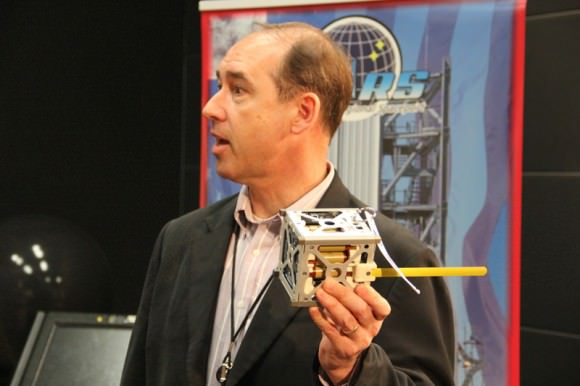
The goal of NASA’s PhoneSat mission is to determine whether a consumer-grade smartphone can be used as the main flight avionics of a capable satellite but at a fraction of the cost.
NASA reports that all three lithium battery powered nanosats are functioning and transmitting data to multiple ground stations.
Two of the cubesats are PhoneSat version 1.0 while the other is the more advanced PhoneSat version 2.0. They were developed by engineers at NASA’s Ames Research Center in Calif.
Each square shaped smartphone measures about 4 inches (10 cm) per side, weighs about 4 pounds and is the size of a coffee mug. The smartphone serves as the cubesats onboard computer – see my photos.
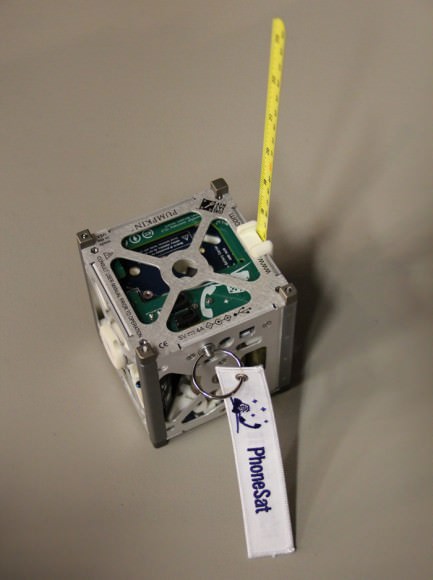
The cameras will be used for Earth photography. Imaging data will be transmitted in chunks and then stitched together later.
The third time was the charm for Antares following a pair of launch scrubs due to a technical glitch in the final minutes of the initial countdown attempt on Wednesday, April 17 and unacceptable winds on Saturday, April 20.
The rocket flew on a southeasterly trajectory and was visible for about 4 minutes.
This test flight was inserted into the manifest to reduce risk and build confidence for the follow on missions which will fly the fully outfitted Cygnus resupply spacecraft that will dock at the ISS, starting as early as this summer.
The two stage Antares is a medium class rocket similar to the Delta II and SpaceX Falcon 9.
The dummy Cygnus payload was outfitted with instrumentation to collect aerodynamic data until separation from the 2nd stage. That marked the successful conclusion of the A-One mission and the end of all data transmissions.
It will fly in earth orbit for about two weeks or so until atmospheric friction causes the orbit to decay and a fiery reentry.
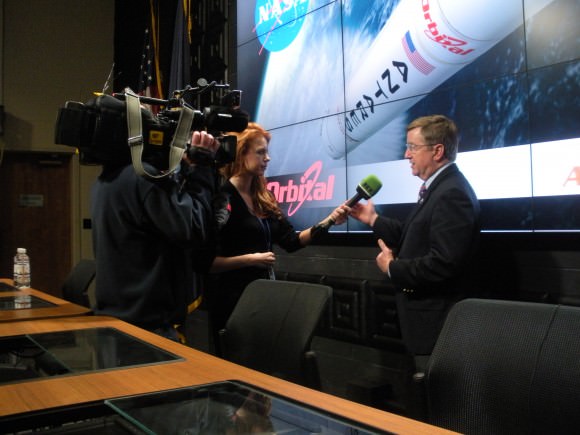
The Antares first stage is powered by dual liquid fueled AJ26 first stage rocket engines that generate a combined total thrust of some 750,000 lbs – original built in the Soviet Union as NK-33 model engines.
The upper stage features an ATK Castor 30 solid rocket motor with thrust vectoring. Antares can loft payloads weighing over 5000 kg to LEO. The 2nd stage will be upgraded starting with the 4th flight.
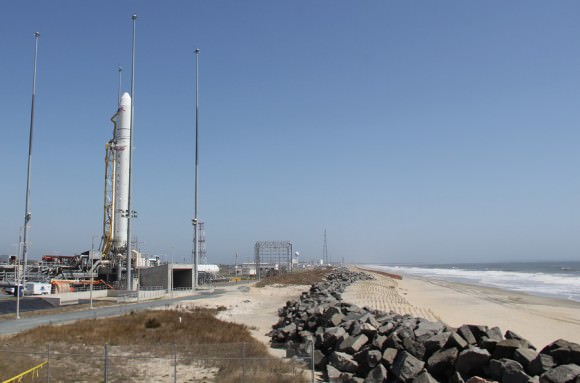
The Antares/Cygnus system was developed by Orbital Sciences Corp under NASA’s Commercial Orbital Transportation Services (COTS) program to replace the ISS cargo resupply capability previously tasked to NASA’s now retired Space Shuttle fleet.
Orbital’s Antares/Cygnus system is similar in scope to the SpaceX Falcon 9/Dragon system. Both firms won lucrative NASA contracts to deliver approximately 20,000 kilograms each of supplies and science equipment to the ISS.
The goal of NASA’s COTS initiative is to achieve safe, reliable and cost-effective transportation to and from the ISS and low-Earth orbit (LEO).
Orbital will launch at least eight Antares/Cygnus resupply missions to the ISS at a cost of $1.9 Billion
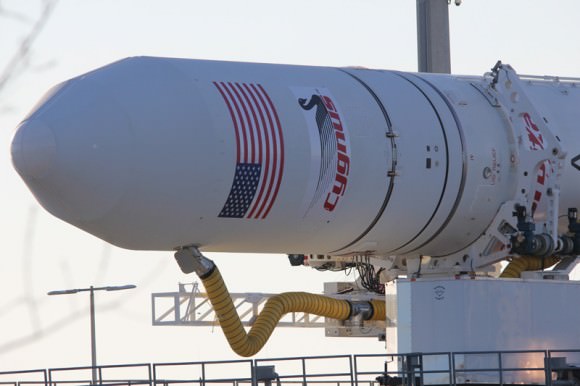
Ken Kremer
…………….
Learn more about Antares, Orion, SpaceX, Curiosity and NASA robotic and human spaceflight missions at Ken’s upcoming lecture presentations:
April 28: “Curiosity and the Search for Life on Mars – (in 3-D)”. Plus the Space Shuttle, SpaceX, Antares, Orion and more. Washington Crossing State Park, Titusville, NJ, 130 PM
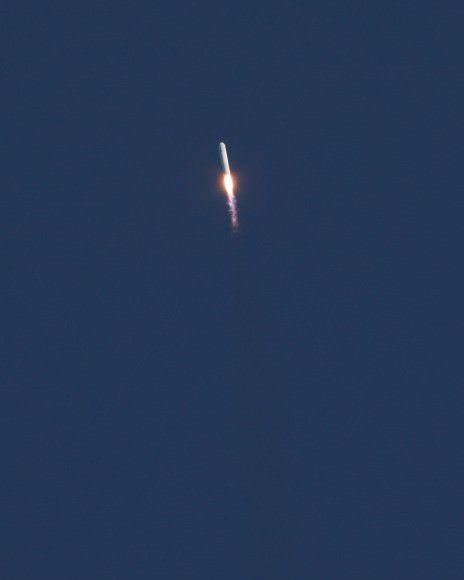
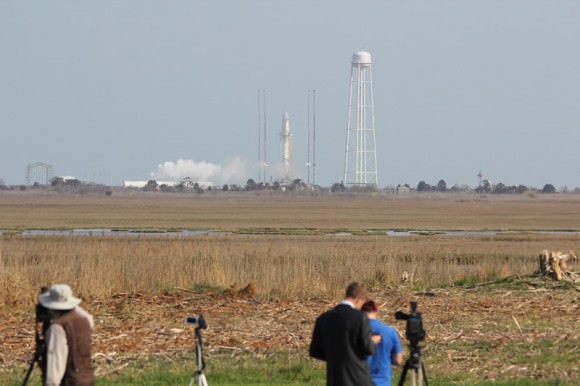

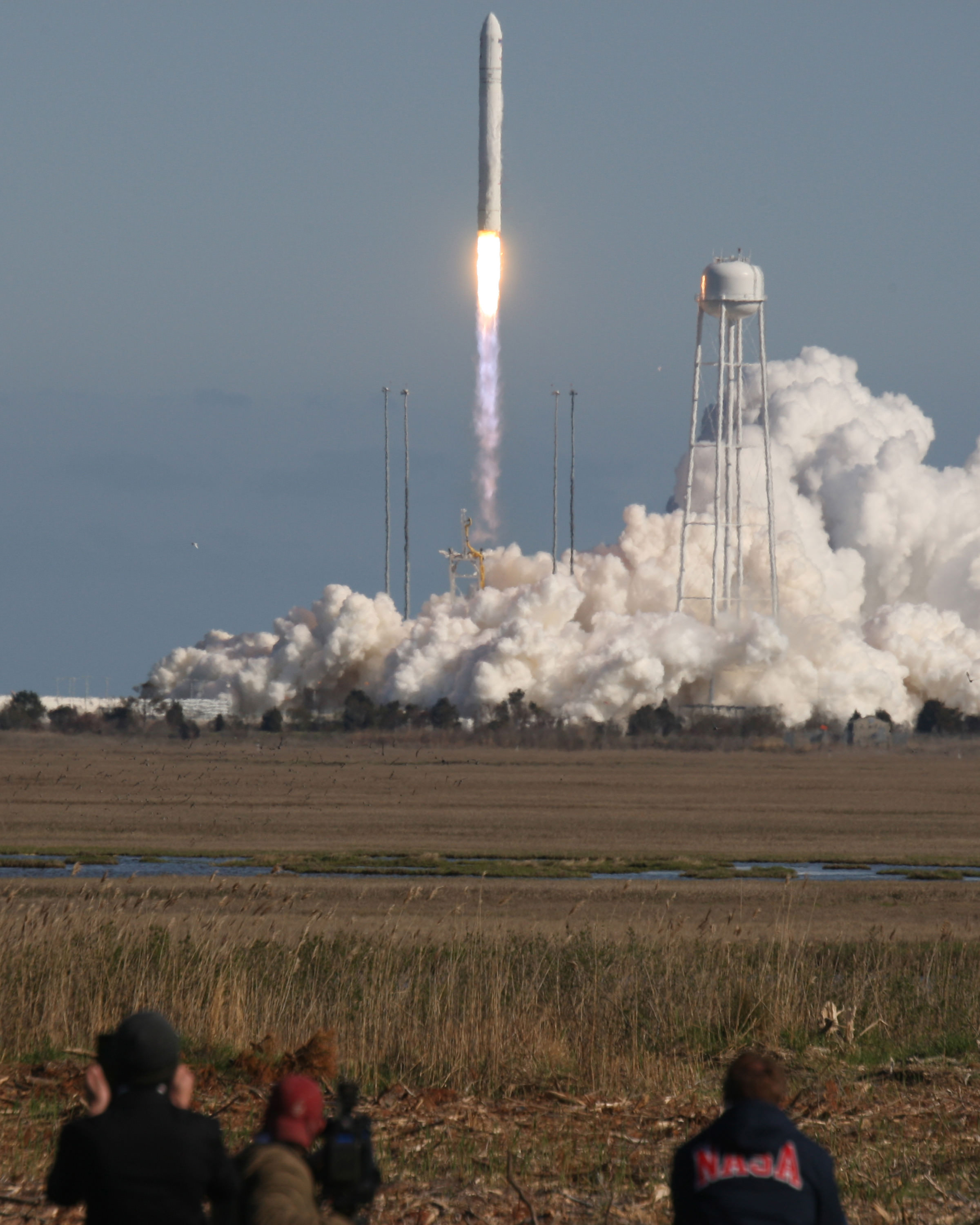
Well done OSC
Really cool stuff! What we need now is a 21st century, couregous and brave, deep space engine design to take us to the next world.
What a beautiful beginning for operations at Orbital Sciences!
I wondered why the launch pad was so close to the ocean? Now I realize this was a cost savings due to the extensive and expensive exhaust trench and/or tower based access structures one usually sees. Am a tad surprised somebody dint jump at the chance to orbit something in the ‘dummy’ payload.
FWIW, there was a third party nanosat as well. [ http://en.wikipedia.org/wiki/Cygnus_Mass_Simulator ]
Nice story again !!!
It is a pity the backward thinking country I live in Australia does not have such forward thinking people. People with vision. No instead we have a bunch of sub humans who gained power by lies and deceit and are hell bent on turning this country into a 4th world nation.